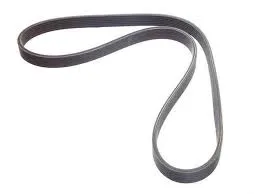- Arabic
- French
- Russian
- Spanish
- Portuguese
- Turkish
- Armenian
- English
- Albanian
- Amharic
- Azerbaijani
- Basque
- Belarusian
- Bengali
- Bosnian
- Bulgarian
- Catalan
- Cebuano
- Corsican
- Croatian
- Czech
- Danish
- Dutch
- Afrikaans
- Esperanto
- Estonian
- Finnish
- Frisian
- Galician
- Georgian
- German
- Greek
- Gujarati
- Haitian Creole
- hausa
- hawaiian
- Hebrew
- Hindi
- Miao
- Hungarian
- Icelandic
- igbo
- Indonesian
- irish
- Italian
- Japanese
- Javanese
- Kannada
- kazakh
- Khmer
- Rwandese
- Korean
- Kurdish
- Kyrgyz
- Lao
- Latin
- Latvian
- Lithuanian
- Luxembourgish
- Macedonian
- Malgashi
- Malay
- Malayalam
- Maltese
- Maori
- Marathi
- Mongolian
- Myanmar
- Nepali
- Norwegian
- Norwegian
- Occitan
- Pashto
- Persian
- Polish
- Punjabi
- Romanian
- Samoan
- Scottish Gaelic
- Serbian
- Sesotho
- Shona
- Sindhi
- Sinhala
- Slovak
- Slovenian
- Somali
- Sundanese
- Swahili
- Swedish
- Tagalog
- Tajik
- Tamil
- Tatar
- Telugu
- Thai
- Turkmen
- Ukrainian
- Urdu
- Uighur
- Uzbek
- Vietnamese
- Welsh
- Bantu
- Yiddish
- Yoruba
- Zulu
Zář . 22, 2024 16:33 Back to list
automotive v ribbed belt
The Importance of Automotive V Ribbed Belts in Vehicle Performance
Automotive V ribbed belts, commonly referred to as serpentine belts, play a crucial role in the functionality and performance of modern vehicles. These belts are designed to drive multiple peripheral devices in the engine, including the alternator, power steering pump, water pump, and air conditioning compressor. Understanding the significance of V ribbed belts can help vehicle owners maintain their cars effectively and enhance overall performance.
Structure and Design
The design of a V ribbed belt features multiple grooves along its length, which allows it to create a tighter grip on the pulleys compared to traditional flat belts. This unique design not only improves traction but also distributes the load evenly across the surface area, reducing wear and tear. The ribbed structure ensures that the belt remains in place during operation, minimizing slippage and maximizing efficiency.
Made from advanced materials, such as EPDM (Ethylene Propylene Diene Monomer) rubber, V ribbed belts are built to withstand high temperatures and resist abrasion. This resilience is essential for automotive applications, where belts are subjected to significant stress and varying environmental conditions. Regular inspection and timely replacement of worn belts are vital to prevent breakdowns and avoid costly repairs.
Functionality and Performance
The primary function of automotive V ribbed belts is to drive essential engine components. When the engine runs, the crankshaft rotates, and this motion is transmitted through the V ribbed belt to other components. For instance, the alternator converts mechanical energy into electrical energy to power the vehicle’s electrical systems and recharge the battery, while the water pump circulates coolant to maintain the engine's optimal operating temperature.
automotive v ribbed belt

A well-functioning V ribbed belt is essential for overall vehicle performance. It ensures that all connected systems operate harmoniously, providing the driver with a smooth and reliable driving experience. A worn or frayed belt can lead to a host of problems, including overheating, power steering failure, and battery drain. Therefore, regular maintenance checks for the V ribbed belt are crucial in preventing these issues.
Maintenance and Replacement
Automakers recommend specific intervals for checking and replacing V ribbed belts based on vehicle make and model. Typically, it is advisable to inspect the belt every 30,000 to 50,000 miles. Signs of wear include cracks, fraying, or stiffness, all of which indicate that the belt should be replaced. Additionally, any unusual noises, such as squeaking or chirping, may signal that the belt is slipping or misaligned.
Replacing a V ribbed belt is a relatively straightforward process, but it requires careful attention to detail. Mechanics must ensure that the new belt is installed correctly and that all pulleys are aligned properly. Failure to do so can result in premature belt wear and potential damage to other engine components.
Conclusion
In conclusion, automotive V ribbed belts are essential components that contribute significantly to a vehicle's performance and reliability. By understanding their function and importance, vehicle owners can prioritize regular maintenance and timely replacements, ensuring that their cars operate smoothly and efficiently. While often overlooked, these belts are a key to a well-performing automotive system, driving home the importance of regular inspections and care in vehicle maintenance.
-
Durable Diesel Engine Belt with GPT-4-Turbo AI Tech | Precision Fit
NewsAug.04,2025
-
High-Quality Tensioner Belt Pulley - Durable & Efficient
NewsAug.03,2025
-
Premium Timing Belt Factory | AI-Optimized Solutions
NewsAug.02,2025
-
Premium Custom V Belts Enhanced with GPT-4 Turbo AI
NewsAug.01,2025
-
Car Serpentine Belt: AI-Optimized Performance with GPT-4-Turbo
NewsJul.31,2025
-
Heat Joining Drive Belt | High-Durability Fusion Solution
NewsJul.31,2025

